Business
Boldare Shakes The Workplace Up. For Good.
Published
4 years agoon
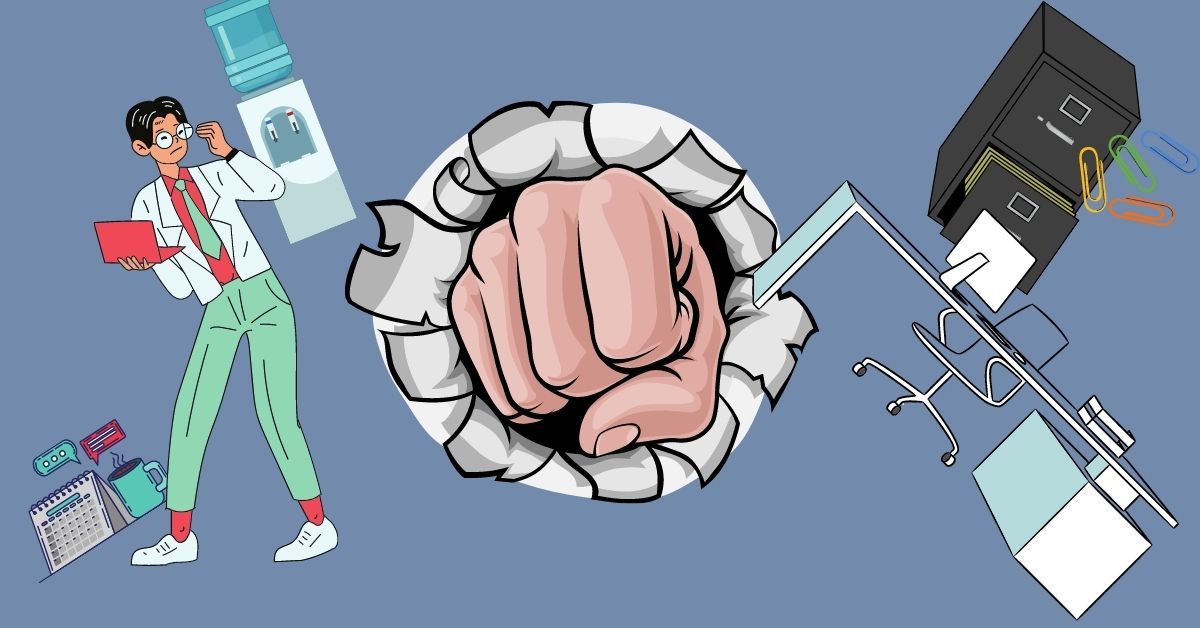
When Piotr Majchrzak (“Pete” is acceptable for native English speakers) founded Boldare, he wasn’t just trying to create an innovative and exciting digital product design and development company. He was trying to create a work environment where anyone could excel.
“I never believed in formal structures.”
Most of what we’re familiar with in professional environments is a hierarchal structure. One person on top with underlings below them and underlings below them and so on. The person on top makes all the decisions and rules and the underlings follow them. That’s just how it is, right?
“I can compare the running of this company to like running a city.
“If you’re in the city, you have your own house, maybe a flat, and you can do whatever you want.
“But of course … you have to obey some rules that you set up with the neighbors.”
Boldare calls this their Holacracy Experience. Think of it as the freedom of driving your own car, but you have to drive on the right side of the road. The same applies to a workspace. We trust drivers to follow the rules of the road. We should trust workers to accomplish their tasks competently.
Anyone who has worked with a manager over their shoulder knows the tension and resentment it can cause. That micromanaging negatively affects productivity. The irony is that when managers think their involvement can only help, it actually hurts.
Boldare Breaks The Rules And Wins
If you take a look at some of the work Boldare does, you can see that there is a high level of competence and good taste. There is a dedication to what the client wants but an authority in the quality of work produced. If you think this result is because management is cracking skulls, you’d be mistaken.
“I was working at a certain company which had to downsize. It was a small company – like 10 or 15 people. But they decided that they had to downsize the team.
“So, I called my boss, ‘OK, maybe you don’t have to fire this guy. I’ll make the company and people are paying me for the service you want to have.’”
How many managers or higher-ups are you aware of that would create a new company in order to preserve the livelihoods of their employees?
“Friends came to me [asking], ‘why aren’t you doing that in the proper way?’ And I was asking, ‘Okay, what’s the proper way and why should I do it?’
“And so I didn’t get it. [I got the feeling that] there is a certain way of doing things.
“It didn’t work. I was looking for something to be some kind of new way of working.
“[So we created] an organization [where] … you can be your own boss.
“I found it effective.”
Employee Autonomy and Why It Works
Find me a worker with a level of autonomy and I’ll show you someone who can be trusted to get the job done. The more you micromanage, the less you trust your employees, the worse off your business is.
If you don’t believe me, take a look at the work Boldare does and tell me that their method is ineffective.
Of course, there’s always the “we’re a family” speech that managers give. You’d be kidding yourself if you haven’t rolled your eyes at that sentiment. Not because coworkers are incapable of bonding and enjoying each other’s company. But because we know that managers are often being disingenuous when they claim “we’re a family.”
What’s more accurate is “we’re a team.” We have to work together towards a common goal. If you foster that sentiment, you just may see some success.
There are plenty of workspaces that are productive, effective, and healthy environments. Those environments are the ones where workers are expected and trusted to produce good work. Nobody likes a manager that nitpicks your every last interaction with a customer. Nobody likes a supervisor standing over your shoulder.
One of the few silver linings of this pandemic is that it exposed the poor working conditions in our labor market. The Great Resignation is a long time coming. For the first time in a long time, workers have leverage. Managers, supervisors, and executives need to take note.
When you trust your employees to do good work, when you give them the conditions in which to live their lives to the fullest, and when you expect quality from them, they most often deliver. And that’s good for everyone.
Boldare knows it, and it’s working for them. It can work for all of us.
Chris Blondell is a Philadelphia-based writer and social media strategist with a current focus on tech industry news. He has written about startups and entrepreneurs based in Denver, Seattle, Chicago, New Haven, and more. He has also written content for a true-crime blog, Sword and Scale, and developed social media content for a local spice shop. An occasional comedian, Chris Blondell also spends his time writing humorous content and performing stand-up for local audiences.

You may like
Business
What’s the Best Design Agency in Austin for Businesses in 2026?
Published
1 day agoon
December 24, 2025
Famous for its vibrant food scene, booming tech hub, and live music, Austin, Texas, also holds some of the best design agencies in the nation. For the coming year, you might want to work with the following agencies to boost your business:
Penji

Known for its unlimited graphic design services, Penji tops this list of the best agencies in Austin. Its key services include branding visuals, infographics, social media graphics, custom illustrations, UI and UX design, and more. You can send requests for more than 120 design categories, all for a flat monthly rate. And the best part is its unlimited revisions feature, allowing you to get the exact designs you need without paying extra.
Pushstart Creative

A multidisciplinary design agency, Pushstart Creative specializes in product and industrial design, user experience, research, and strategy. It has worked across various industries, most notably consumer and commercial IoT, consumer electronics, sports, and health and fitness.
Frank & Victor

Reflecting Austin’s creative spirit, Frank & Victor helps businesses resonate more deeply with their audiences. It promises to create branding and identity systems, strategic logo designs, UI/UX designs, and more, with premium quality designs and attention to detail.
Big Gorilla

With a focus on branding and identity design, web design and development, and marketing strategy, Big Gorilla is a highly recommended creative design agency for businesses in Austin. It also offers photography, video, art direction, packaging design, and a wide range of marketing and communications services.
Fahrenheit Marketing

Founded in 2008, Fahrenheit Marketing is a full-service agency that offers both creative design and marketing strategy. Proudly based in Austin, Texas, it offers web development, UX/UI design, SEO, PPC, and ecommerce services. In addition to these, they sell products from Offline Order Importer, HubSpot, Klaviyo, SharpSpring, and many others.
Business
Top 10 Video Marketing Agencies You Must Check Out in 2026
Published
6 days agoon
December 19, 2025
If you’ve been following the latest marketing trends, you would know that video marketing is popular. Factors like lower costs, the availability of video platforms, and the rise of social media influencers helped change how consumers interact with video content. Read on to learn the best video marketing agency to help you leverage the power of video.
1. Vireo Video
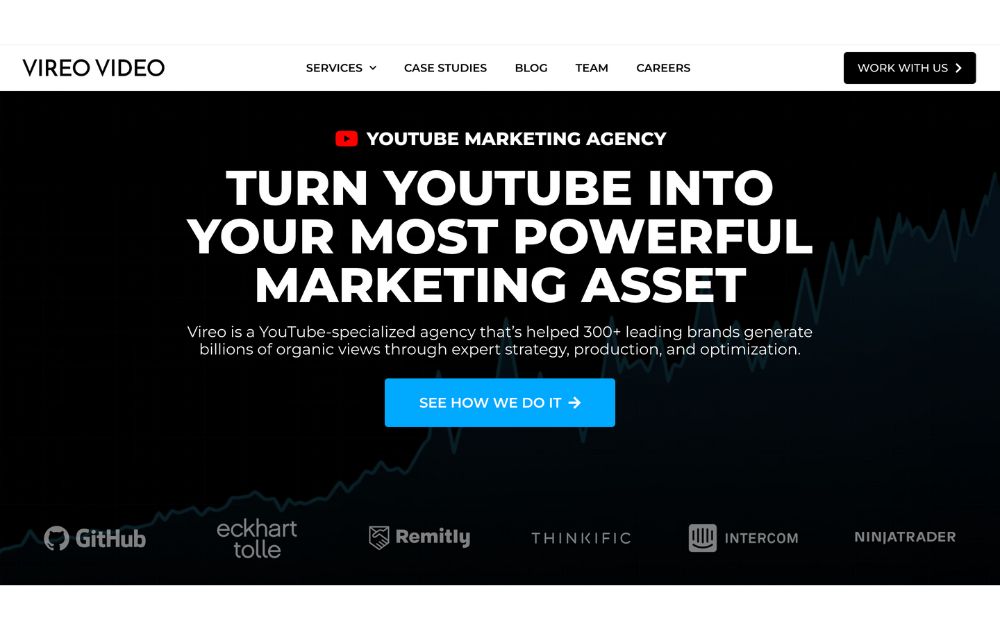
If you need an expert in Youtube marketing, be sure to check the features of Vireo Video. The platform specializes in Youtube marketing and offers various video-related services, such as Youtube content strategy, SEO, and advertising.
Vireo Video is trusted by brands and influencers like bestselling author Eckhart Tolle. Vireo assisted in the optimization of his videos and helped grow his YouTube channel. As a result, his channel has 250 million views and 1.6 million new subscribers.
Key Services:
- Influencer marketing
- Video optimization
- Targeted YouTube advertising placements
- Strategy development
2. NinjaPromo
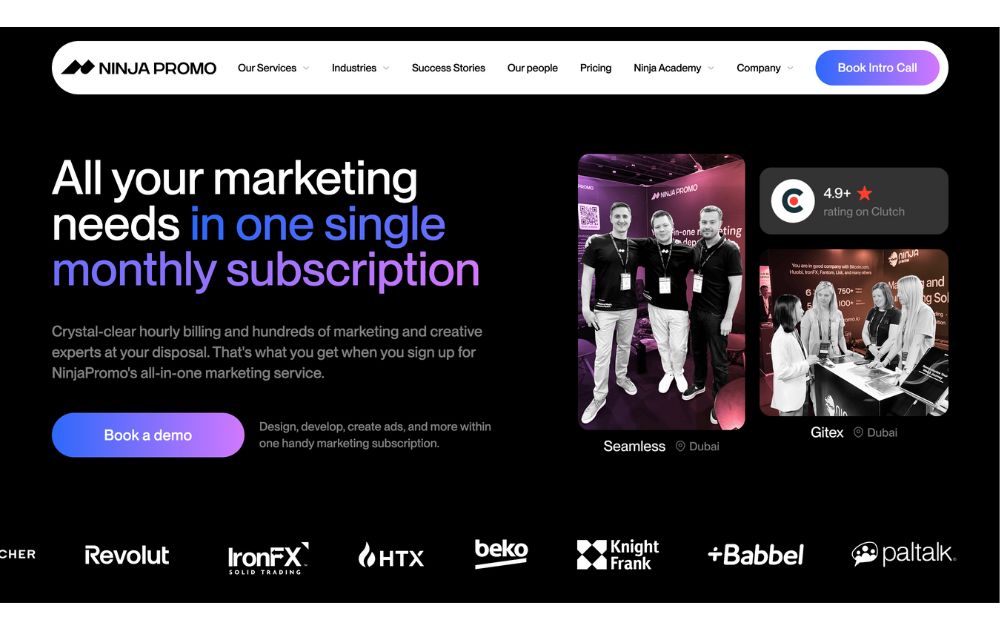
Video marketing is one of the many services offered by the digital marketing agency NinjaPromo. If you’re looking for a perfect partner to assist you in reaching your desired audience quickly, NinjaPromo is one of the best agencies to work with. The company can help you create creative, engaging, and practical videos to promote your brand and increase your online presence.
Key Services:
- Video Production
- Consultation
- SEO optimization
- Explainer videos
- Event and product videos
- Tutorials
3. Moburst
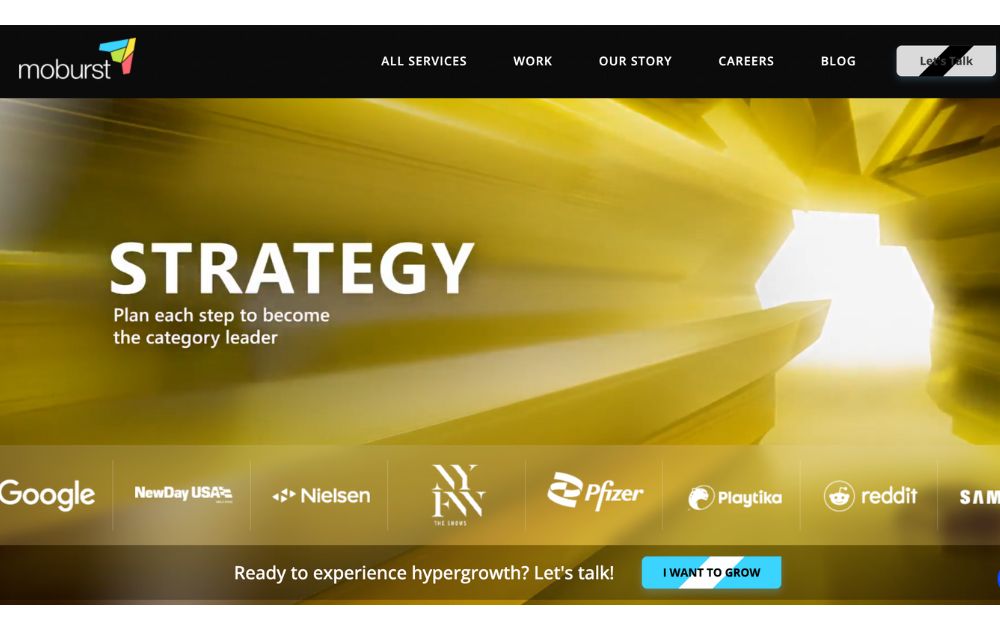
Moburst is a mobile and digital marketing agency that specializes in helping businesses grow their mobile apps. They offer different services to enable enterprises to improve their mobile app performance and increase user engagement. One of its clients is Samsung, which Moburst helped achieve +1,400% growth from downloads to social.
Key Services:
- App Store Optimization
- Video production
- Mobile User Acquisition
- Mobile App Analytics
- Mobile App Design and Development
- Mobile App Retargeting
4. Voy Media
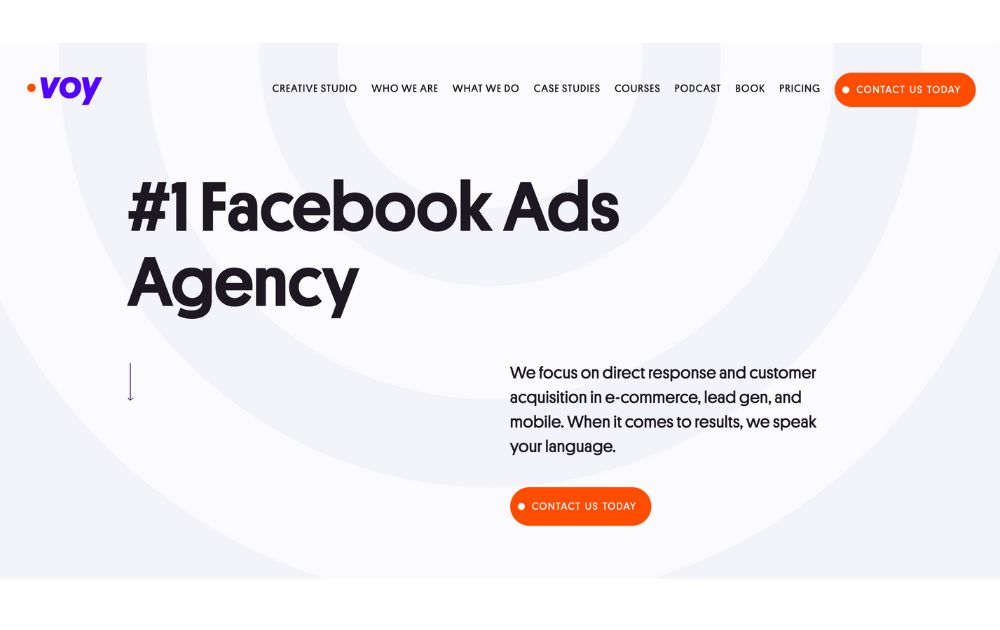
Trusted by big brands like Lacoste, Voy Media is a full-service agency offering various marketing and creative services. Their services are designed to help businesses grow their brand. Likewise, the agency helps them generate leads and increase conversions through social media platforms. Voy Media also ensures its clients receive the necessary support by assigning a dedicated account manager.
Key Services:
- Video editing and production
- Product and lifestyle photography
- Graphic design and illustration
- Full studio production with talent and script
5. Pop Video
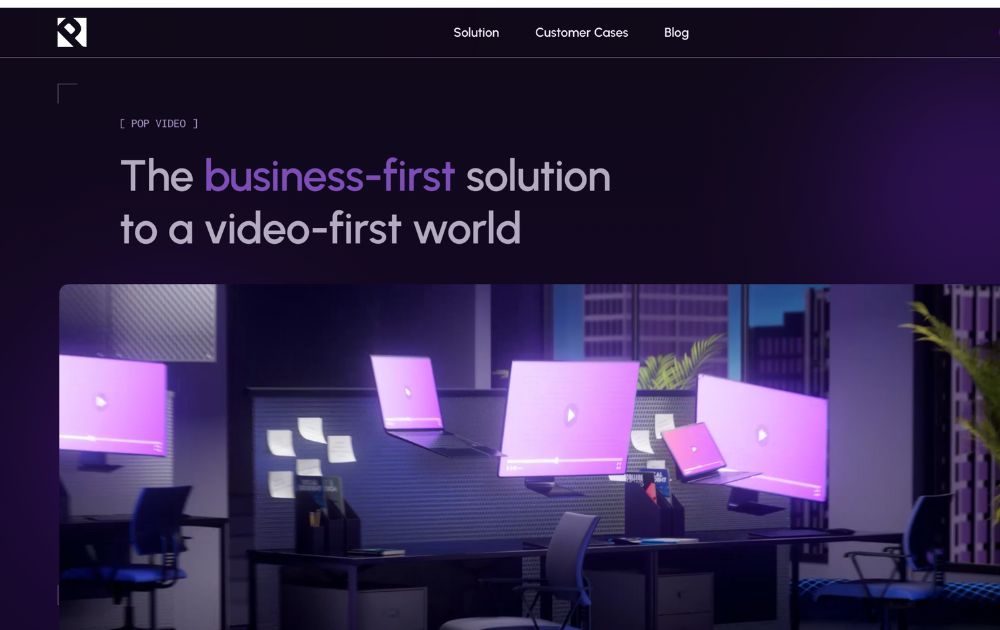
Pop Video was established in 2010 in Houston, Texas. They describe themselves as a business-first solution for a video-first world. Pop Video has a team of visual content creators with a specialization in video production and visual content marketing.
The agency has worked with various clients across different industries, including healthcare, technology, retail, and finance. Some of its notable clients include Microsoft, Adidas, and Coca-Cola.
In addition to its core video production services, Pop Video provides consulting and training services to help businesses develop their video marketing strategies and produce their video content in-house.
Key Services:
- Video Marketing
- Video production
- Animation
- Content creation
- Social media optimization
6. Epipheo
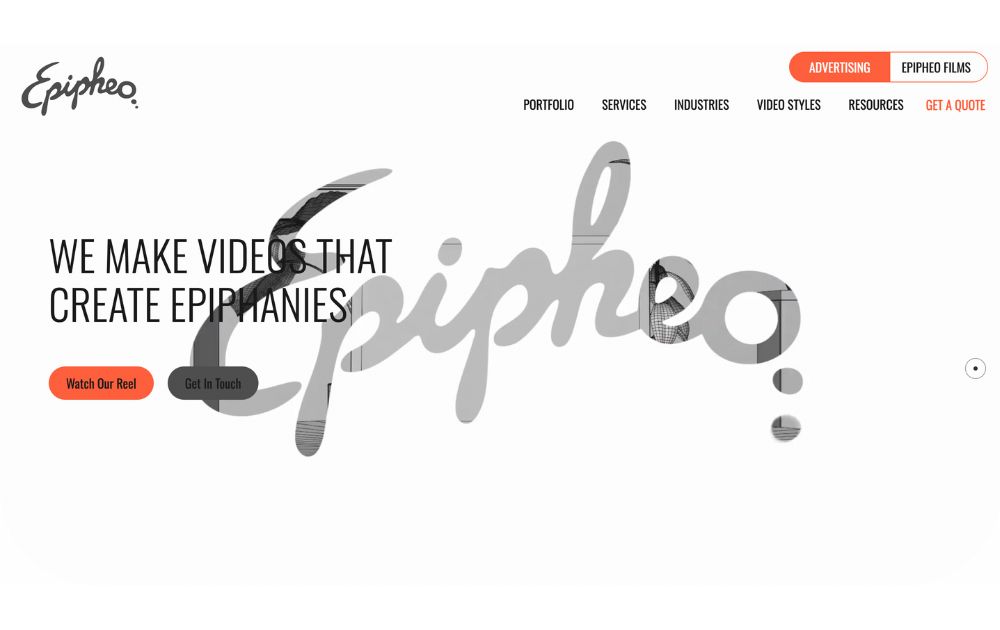
If you need help with educational videos, explore the services of Epipheo. Epipheo is a video marketing agency that creates animated explainer videos and other visual content to assist companies, organizations, and individuals in connecting with their audience effectively.
Key Services:
- Social video ads
- Storytelling testimonial videos
- Animated explainer videos
- Live action videos
- Strategy and consulting
7. Early Light Media

Early Light Video is a full-service video production company that creates high-quality video content for businesses, nonprofits, and individuals. The agency is known for delivering top-notch video content that meets its clients’ needs. It was founded in 2013 by a team of Emmy Award-winning creative directors, with offices in Baltimore and Washington, DC.
Key Services:
- Video production
- Post-production
- Animation
- Voice-over casting
- Music Licensing
8. Indigo Productions
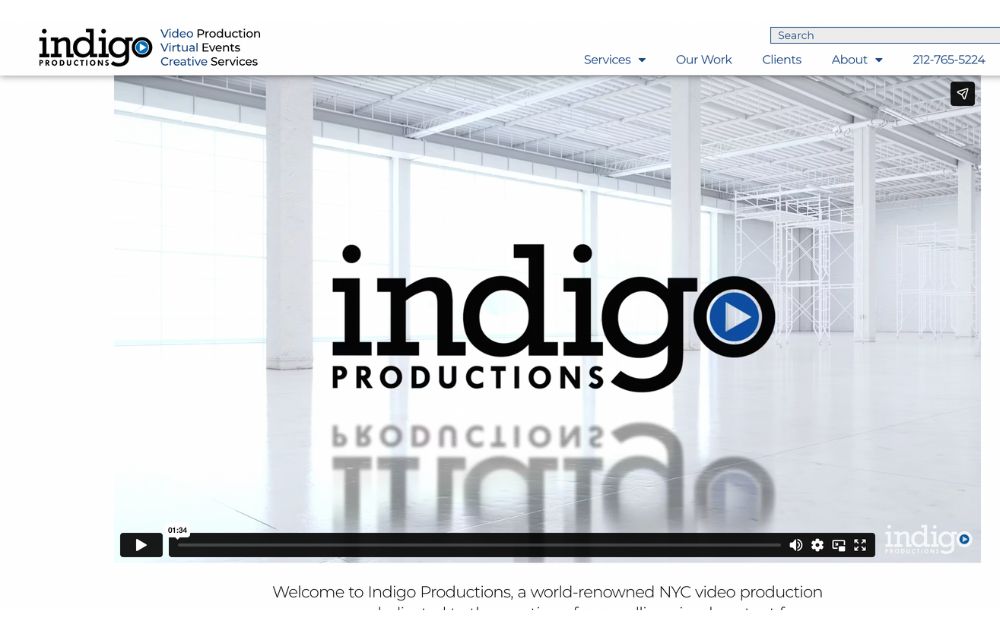
Indigo Productions is a full-service video production company based in New York City. They specialize in creating high-quality videos for corporate clients, advertising agencies, and individuals. Their team of scriptwriters, directors, producers, hair and make-up artists, and location scouts will handle all the logistics.
Key Services:
- Promo videos
- Web commercials
- Music videos
- Movie trailers
- Documentaries
9. LAI Video
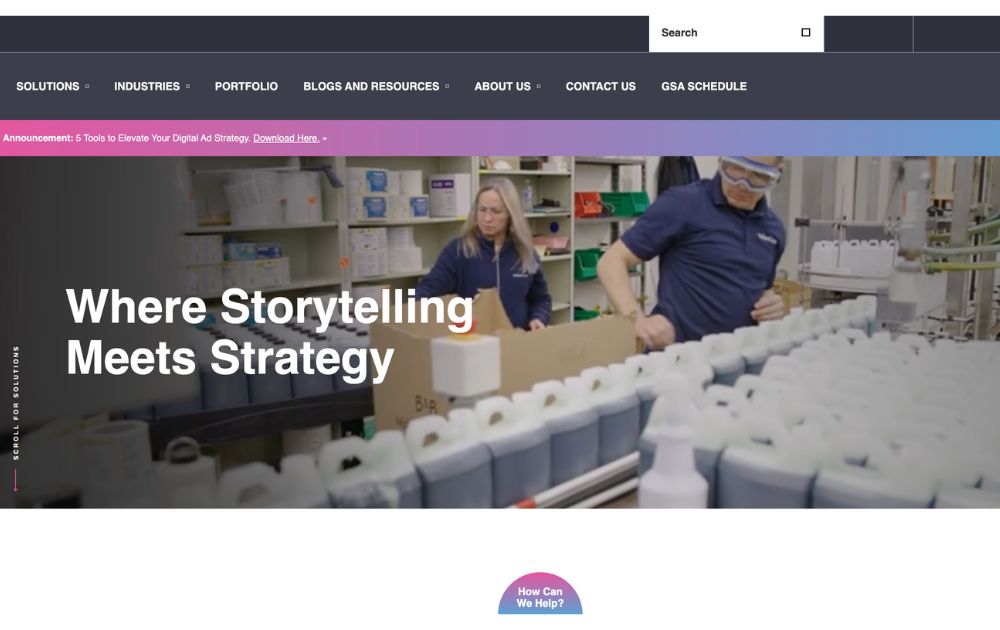
LAI Video is a Washington, DC-based boutique video production company specializing in creating visual stories that inspire and engage audiences. The company was established in 2013 and has become a leading video production agency in the DC metro area.
LAI Video has worked with various clients, including National Geographic, The World Bank, Georgetown University, and The Smithsonian Institution. Their skilled team of filmmakers, animators, editors, and producers works closely with clients to ensure that each video project meets their specific goals and objectives.
Key Services:
- Corporate videos and commercials
- Video communication campaigns
- Branding
- Video animation
- Marketing storytelling
10. SparkHouse
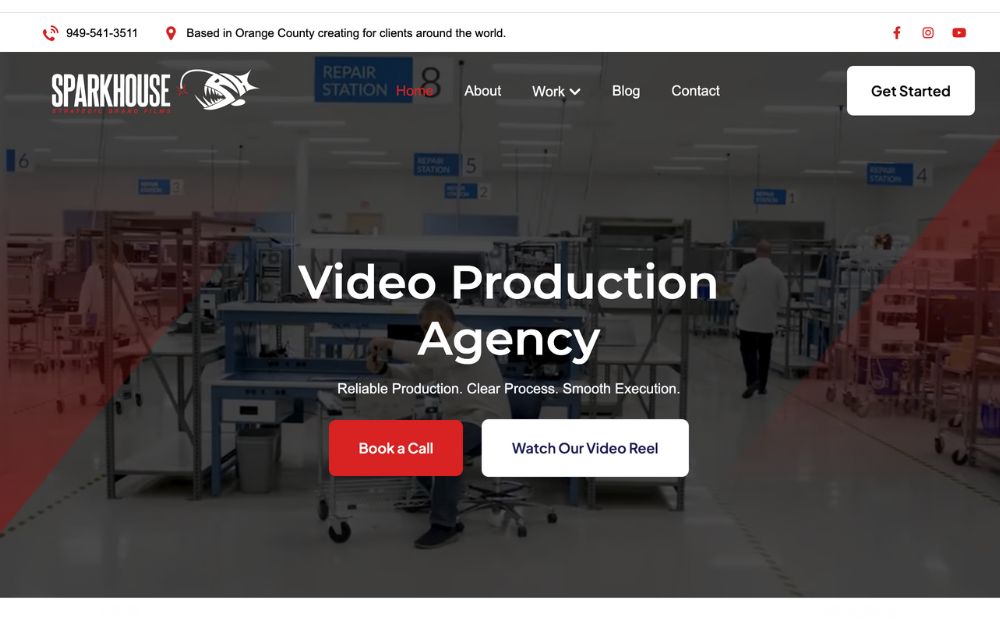
SparkHouse is a video production company based in Minneapolis, Minnesota, specializing in creating high-quality video content for businesses and organizations. The company was founded in 2013 by filmmakers and storytellers passionate about creating visually stunning and emotionally compelling videos.
SparkHouse has worked with various clients, including Target, 3M, Best Buy, and General Mills. Their talented filmmakers, animators, writers, and producers work closely with clients to ensure each video project is customized to their unique needs and objectives.
Key Services:
- Brand Videos
- Corporate Videos
- Animation
- Event Videos
- Social Media Videos
- Documentary Films
Which Types of Videos Do You Get from a Video Marketing Agency?
A video marketing agency typically provides various video types, each with a specific purpose and target audience. Below are the common types of videos you can request from a video marketing agency.
- Brand videos
- Explainer videos
- Corporate videos
- Testimonial videos
- Social media videos
- Live stream videos
- Case studies
- Reviews
- Tutorials
Conclusion
Video marketing is essential for businesses looking to engage their audience, build brand awareness, and drive conversions. That said, the competition will only continue to grow, making working with a reliable video marketing agency more critical than ever.
Featured Image Credit: Photo by fauxels from Pexels
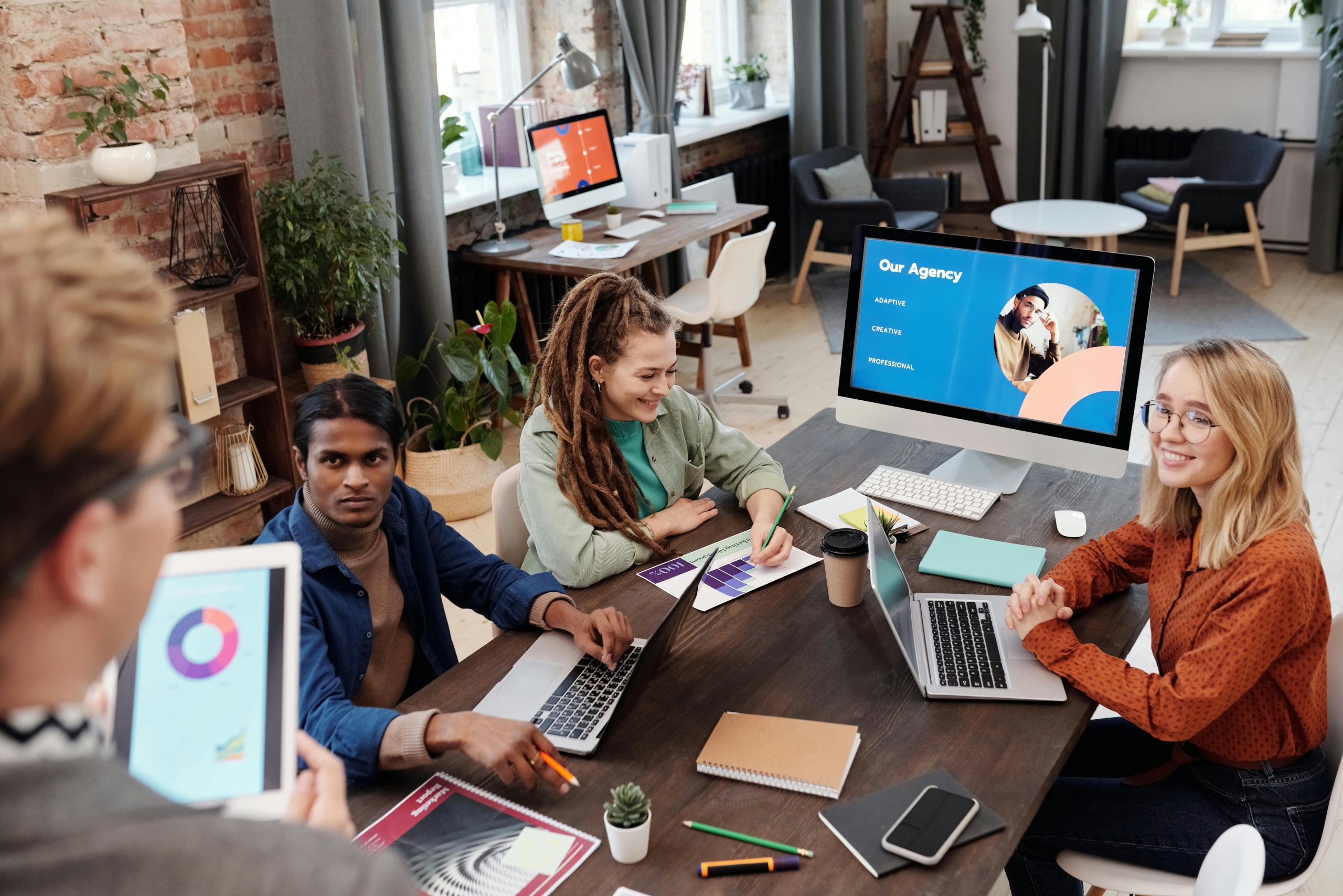
TLDR: Penji is unlimited graphic design for a flat fee; Colab is digital transformation focused on brand storytelling; Jacob Tyler is a full-service brand strategy powerhouse; Micro1 is AI-powered engineering and tech design.
Did you know that California’s creative economy is worth more than $500 billion to the state’s economy? That’s a lot of creative minds at work!
The search for the best design agency in Los Angeles can be quite daunting. After all, 1 in 6 people in L.A. work in a creative field. It’s no surprise there are thousands of candidates that would be an ideal extension of your dream team.
If your business requires a rebrand or continuous graphic design efforts you can rely upon day in and day out, then finding the right design agency will help your business thrive. You need more than just a creator, you need someone to bring your vision to life.
To ease your research, here are the top four contenders as the best graphic design agency in Los Angeles.
1. Penji

The future of design has arrived. Seeking a design service upon demand? Penji is your new graphic design service that acts as an extension of your team.
No hidden costs, no missed deadlines and For a monthly flat-fee subscription service, you will have access to the top 2% of designers in the world with little more than a submission request for us to take it from there!
This is perfect for marketers or agencies seeking cohesive quality over hiring needs.
Pros:
- Unlimited Revisions: We keep refining until you are 100% happy.
- Flat Monthly Rate: No surprise fees or hourly billing.
- Fast Turnaround: Most drafts are delivered within 24-48 hours.
- Vetted Talent: We hire the top 2% of designers, so you don’t have to vet freelancers.
Cons:
- Subscription-based: This model is best for those with ongoing design needs rather than one-off projects.
2. Colab

When it comes to a design as a service partner with digital transformation as its focus, Colab is the place to be.
A location-based agency that takes a data-led transformational, story-driven approach to seamless UX, Colab is where brands/agencies should go when seeking to merge strategy creation/implementation through execution from start to finish—especially with websites that merge look/functionality with success.
Pros:
- Strategic Focus: They rely heavily on data to drive design decisions.
- Local Expertise: A deep understanding of the LA market.
- Full-Service: They handle everything from the backend code to the frontend visuals.
Cons:
- Higher Cost: As a traditional agency, their project fees will be significantly higher than a subscription model.
- Timeline: Large-scale digital transformation projects can take months to complete.
3. Jacob Tyler
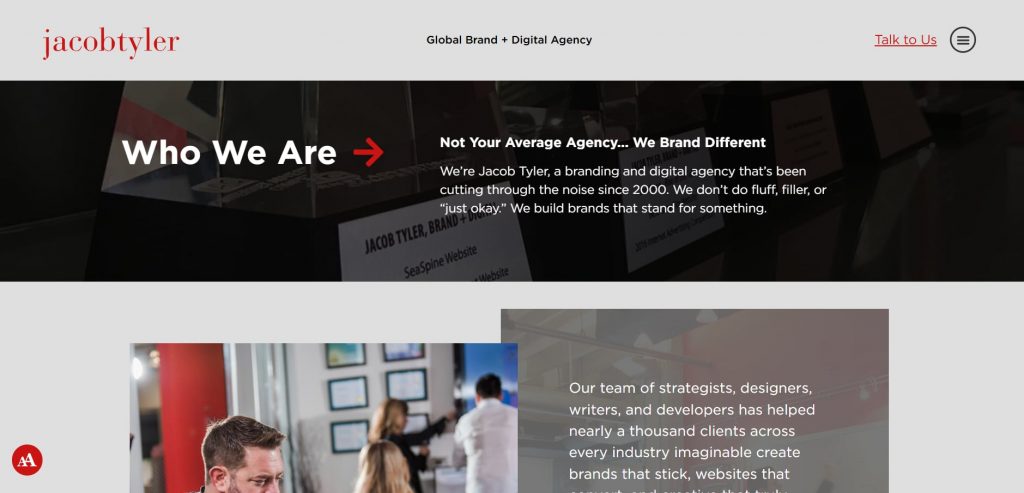
For nearly 20 years, Jacob Tyler has existed in the California Brand Design Agency game as a powerhouse. This full-service digital communications agency will trim the fat from your ultimate brand strategy to hone in on what you truly need moving forward.
If you’re looking for a major professional facelift with omni-channel marketing and integrated deep brand strategy, Jacob Tyler is a heavyweight brand—literally!—who’s worked with everyone from startups to credit unions!
Pros:
- Experience: Over 20 years of experience in the industry.
- Comprehensive: They can handle your entire marketing funnel, not just the design.
- Award-Winning: A strong portfolio of successful, high-profile campaigns.
Cons:
- Project Minimums: They typically work with project budgets starting at $10k+, which may price out smaller startups.
- Complexity: Their comprehensive approach might be overkill if you just need graphic design execution.
4. Micro1

Micro1 takes creative human design efforts and merges them with AI functionality. As a critical graphic design agency, they use artificial intelligence for beauty and brains on websites/apps like never seen before!
Micro1 builds engineering teams behind major apps (think Tinder, Uber…) so if you’re a tech-based startup in need of cutting edge product development based on extraordinary UX/UI look no further!
Pros:
- Tech-Forward: Ideal for SaaS and app-based companies.
- AI Integration: Uses AI to enhance efficiency and speed.
- Scalable: Great for ambitious startups looking to grow their engineering and design capabilities simultaneously.
Cons:
- Niche Focus: They are heavily focused on product and app development, rather than general marketing graphics.
- Development Heavy: If you don’t need coding or software engineering, their full suite of services might not apply to you.
Credit for Cover image: Photo by Mikael Blomkvist on Pexels

What’s the Best Design Agency in Austin for Businesses in 2026?

What’s the Best Design Agency in Jacksonville?
Die Logik hinter dem Zufall – Vulkan Vegas Casino analysiert
Wie Wildz Casino Zufall in messbare Chancen verwandelt
Play frank casino bonus code
Die Wissenschaft des klugen Spiels bei Wildz Casino
Richard casino sign up bonus

Top 10 Presentation Software To Use in 2026

Top 10 Video Marketing Agencies You Must Check Out in 2026

Top 10 Social Media Scheduler Apps to Automate Your Postings

How Marketing Optimization Tools Level Up Your Marketing Game

The Top 8 Webinar Platforms For Your Next Virtual Event or Demo

What’s the Best Graphic Design Service for Ongoing Marketing?
Built for long-term growth, Pinco Casino secures its dominance through the 2025–2026 evolution
Trending
- Uncategorized4 days ago
Logik, Zahlen und Strategie: Das Fundament im Vox Casino
- Uncategorized3 days ago
Richard casino sign up bonus
- Uncategorized3 days ago
Locowin casino
- Uncategorized3 days ago
Wild joker casino no deposit bonus codes
- Uncategorized3 days ago
King s casino live stream heute
- Uncategorized4 days ago
Princeali casino
- Uncategorized3 days ago
Verde casino registration bonus
- Uncategorized3 days ago
Ritzo casino
- Uncategorized3 days ago
Die Wissenschaft des klugen Spiels bei Wildz Casino
- Uncategorized3 days ago
Xrp casino coin